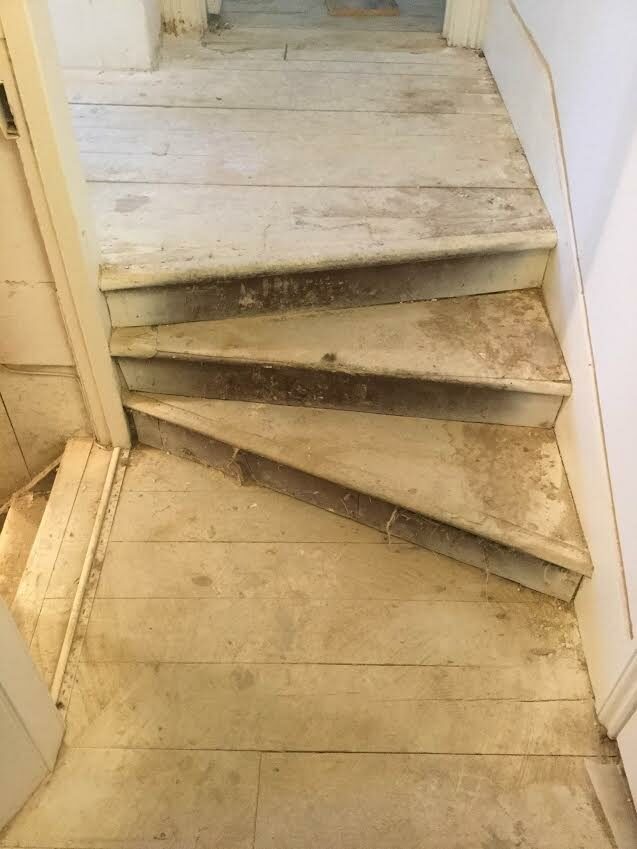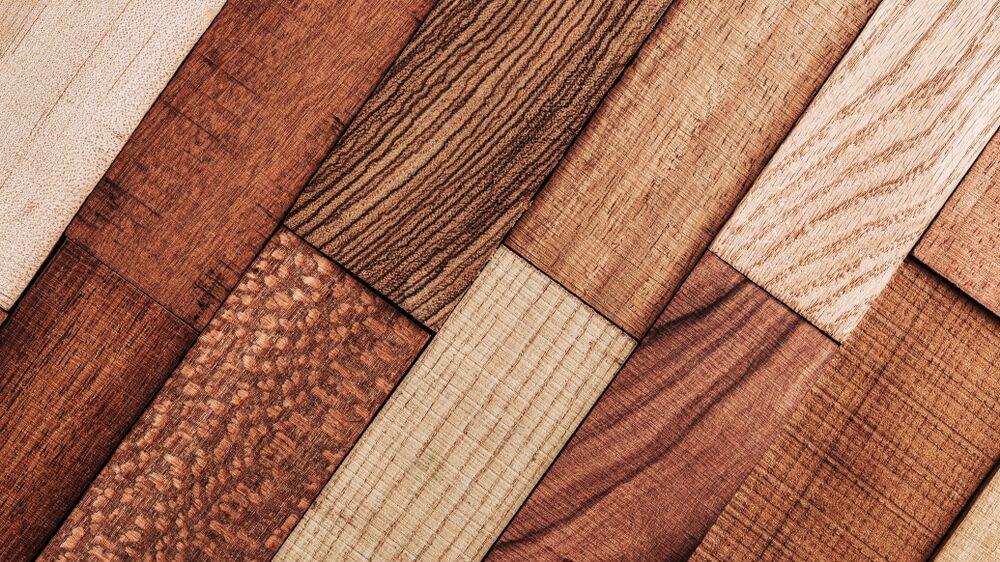London:
Nationwide:
Oak Elegance: A Guide to Stylish Flooring Choices and Maintenance
Posted on December 6, 2023
Wood Flooring

Elegance in Oak: An Expert’s Guide to Chic Flooring Selection and Care
When it comes to enhancing the beauty and ambiance of your home, few elements have as much impact as your choice of flooring. Flooring not only serves a functional purpose but also sets the tone for the entire space, influencing its aesthetics and comfort.
In the world of flooring, oak flooring stands out as a timeless and elegant choice. Its rich texture, warm tones, and durability have made it a favorite among homeowners and interior designers alike. In this comprehensive guide, we will delve into the world of oak flooring, exploring its allure, various options, styling possibilities, installation techniques, and, most importantly, how to maintain its beauty for years to come.
Whether you’re considering oak for your new home or planning to upgrade your existing floors, this guide will equip you with the knowledge and insights needed to make informed decisions. From classic to contemporary, oak flooring has a place in any interior style, and by the end of this journey, you’ll have a deep appreciation for the elegance it can bring to your living spaces.
Let’s embark on a journey to discover the charm and versatility of oak flooring and learn how to preserve its enduring beauty. Whether you’re a homeowner, a DIY enthusiast, or an interior design aficionado, this guide has something valuable to offer. So, let’s begin our exploration of oak elegance.
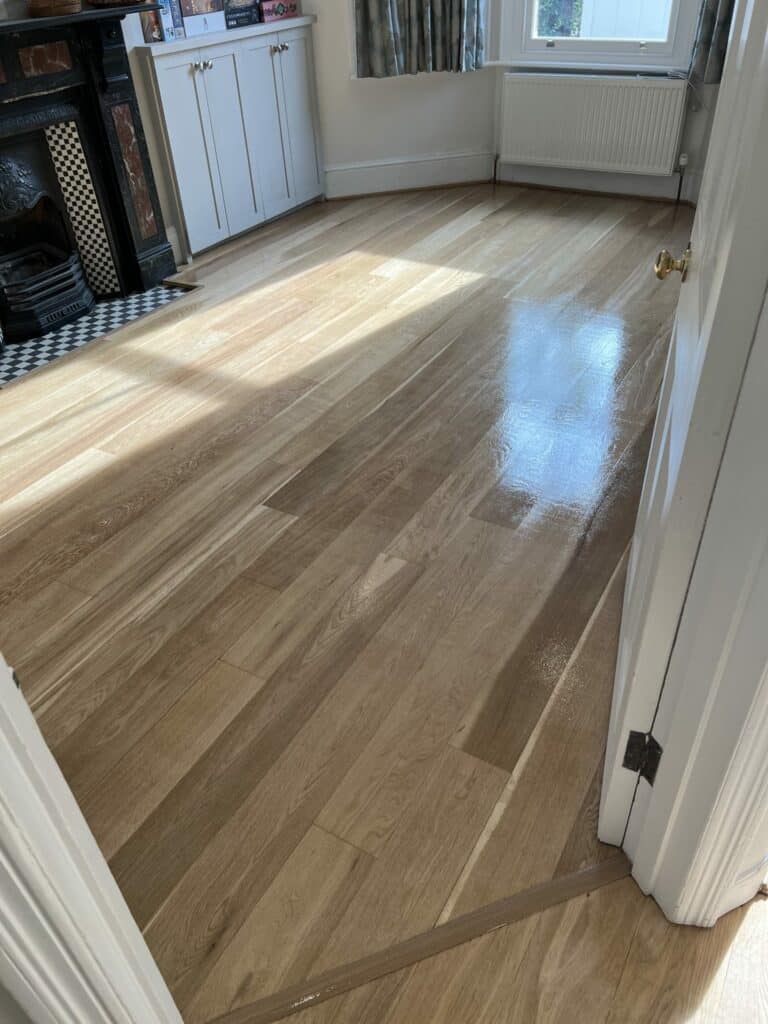
The Allure of Oak Flooring
Oak flooring possesses a unique and enduring allure that has captivated homeowners and designers for centuries. Its popularity can be attributed to a combination of factors that make it a standout choice for any home. Let’s delve into what makes oak flooring so enchanting.
- Timeless Appeal: Oak’s classic beauty transcends trends and fads. Its timeless charm ensures that it never goes out of style, making it a long-term investment that retains its elegance year after year. Whether you have a traditional or modern interior design, oak flooring can seamlessly complement your decor.
- Durability: Oak is renowned for its exceptional durability. It’s a hardwood that can withstand the rigors of daily life, making it suitable for high-traffic areas in your home. With proper care and maintenance, oak floors can last for generations, adding to their appeal.
- Rich Texture: The natural grain patterns and textures of oak add depth and character to any space. Whether you opt for a smooth, polished finish or a more rustic, textured one, oak’s grain patterns create a sense of depth and warmth that’s hard to match.
- Versatility in Staining: Oak’s versatility extends to the staining process. You can choose to leave it in its natural state, allowing its warm, golden hues to shine through, or you can stain it to achieve the exact color you desire. This flexibility ensures that oak flooring can complement a wide range of color schemes and interior styles.
- Sustainability: For eco-conscious homeowners, oak flooring can be sourced from sustainable forests. Look for certifications like FSC (Forest Stewardship Council) to ensure that your oak flooring comes from responsibly managed forests, minimizing its environmental impact.
- Resale Value: Oak flooring enhances the resale value of your home. Potential buyers often appreciate the timeless beauty and durability of oak, which can make your property more appealing in the real estate market.
- Warmth and Comfort: Oak flooring has natural insulating properties, helping to maintain a comfortable indoor temperature. It feels warm underfoot, making it a cozy choice, especially in cold climates.
- Natural Beauty: Oak’s natural imperfections, such as knots and mineral streaks, add character to your floors. These unique features contribute to the authentic and organic feel of oak, making each plank a work of art in its own right.
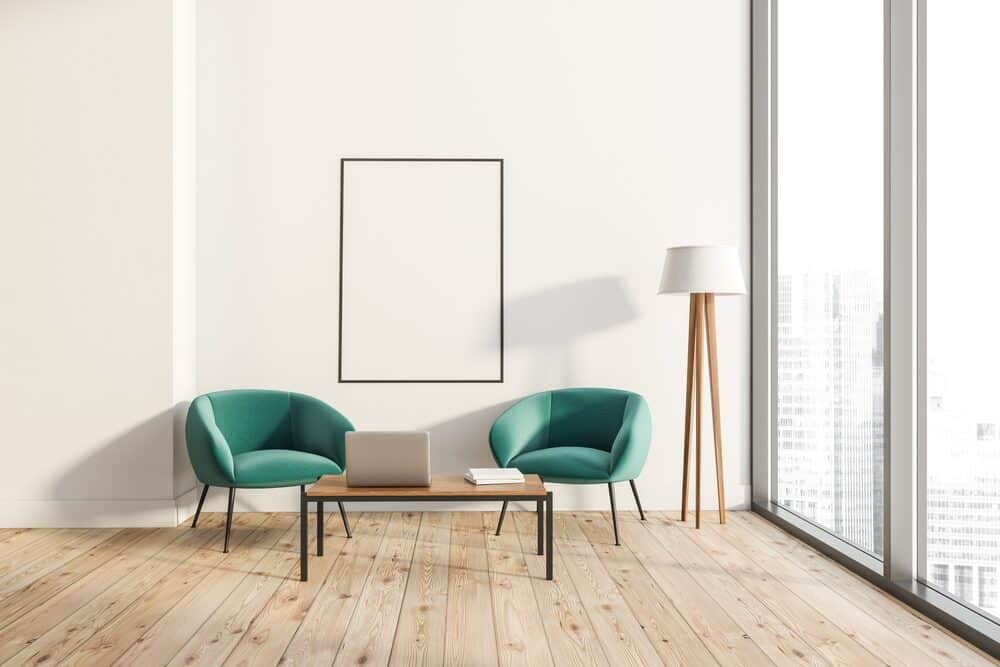
Exploring flooring options
When it comes to oak flooring, you have several options to consider, each with its own unique characteristics and advantages. Let’s explore these flooring options to help you make an informed choice that aligns with your lifestyle and design preferences.
-
Solid Oak Flooring:
Solid oak flooring is the embodiment of classic elegance. It is crafted from solid pieces of oak wood, milled into planks. Here are some key features and considerations:
- Authenticity: Solid oak flooring exudes authenticity and is known for its genuine wood feel underfoot.
- Durability: It is highly durable and can withstand decades of wear and tear. Sanding and refinishing can rejuvenate it when needed.
- Thickness: Solid oak planks are usually thicker compared to other types, providing a substantial and sturdy feel.
- Installation: Installation can be more challenging and time-consuming, often requiring professional expertise.
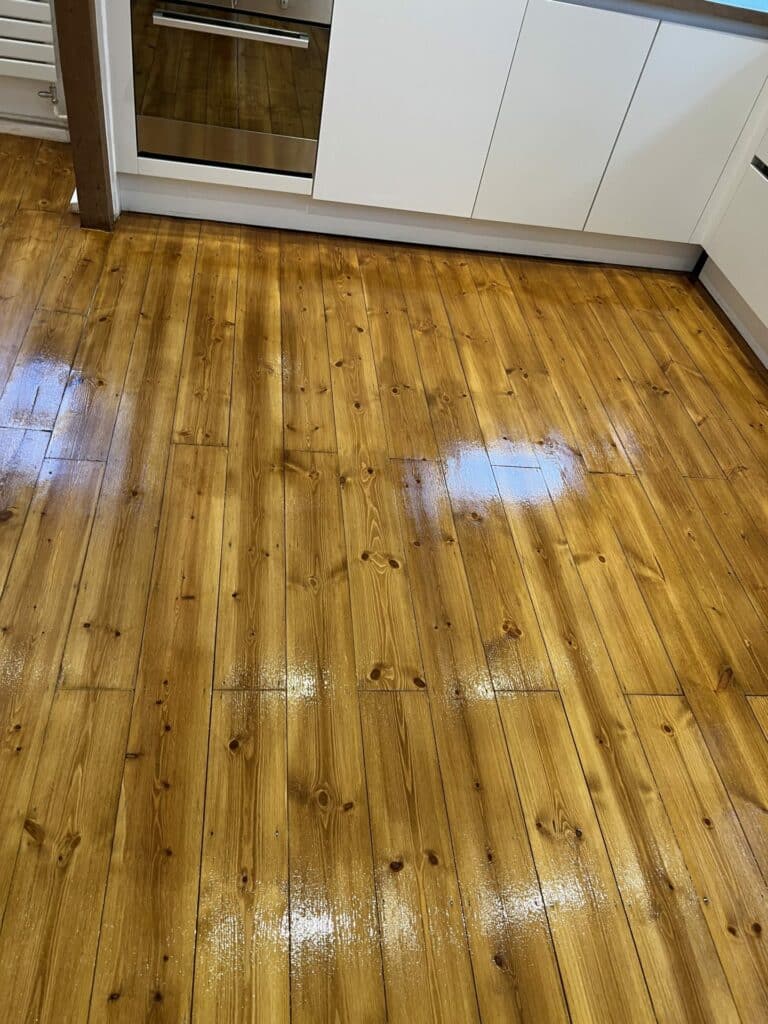
-
Engineered Oak Flooring:
Engineered oak flooring offers a balance between authenticity and practicality. It consists of a top layer of real oak veneer bonded to layers of plywood or high-density fiberboard. Here’s what you should know:
- Stability: Engineered oak is less susceptible to expansion and contraction due to changes in humidity, making it suitable for various environments.
- Versatility: It can be installed below ground level, such as in basements, where solid wood flooring may not be recommended.
- Ease of Installation: Engineered oak is often designed with click-lock systems, making installation more DIY-friendly.
- Appearance: The top layer of real oak provides a genuine wood appearance while reducing the use of solid wood.
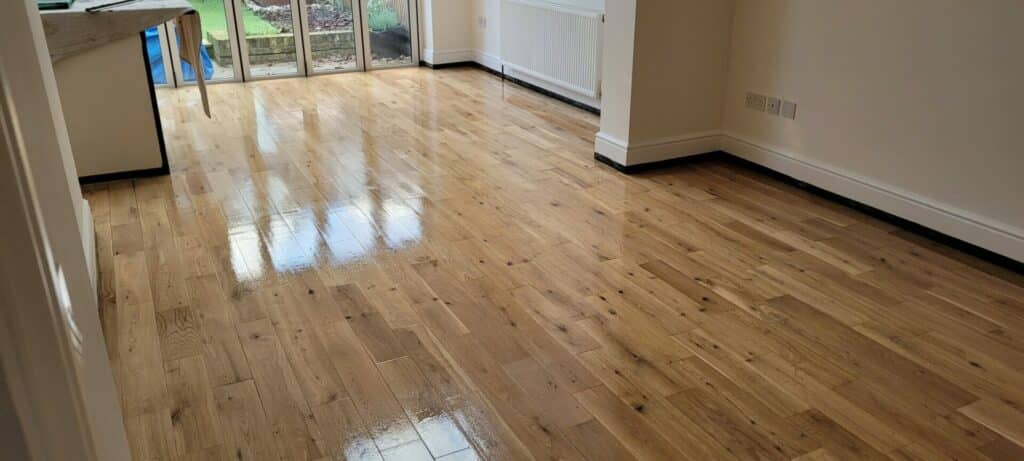
-
Laminate and Vinyl Alternatives:
In addition to solid and engineered oak, you may also consider laminate and vinyl flooring alternatives that mimic the look of oak. Here’s a brief overview:
- Laminate Flooring: Laminate flooring features a high-resolution photograph of oak grain patterns covered by a protective wear layer. It’s affordable and easy to install, making it a popular choice for budget-conscious homeowners.
- Vinyl Plank Flooring: Vinyl plank flooring offers excellent water resistance, making it suitable for kitchens and bathrooms. It comes in various designs, including oak wood patterns, providing a cost-effective option for achieving the oak look.
When choosing between these options, consider factors such as your budget, the location where the flooring will be installed, and your preference for authentic wood versus alternatives that replicate the look. Additionally, think about long-term maintenance and your willingness to invest time and effort in upkeep.
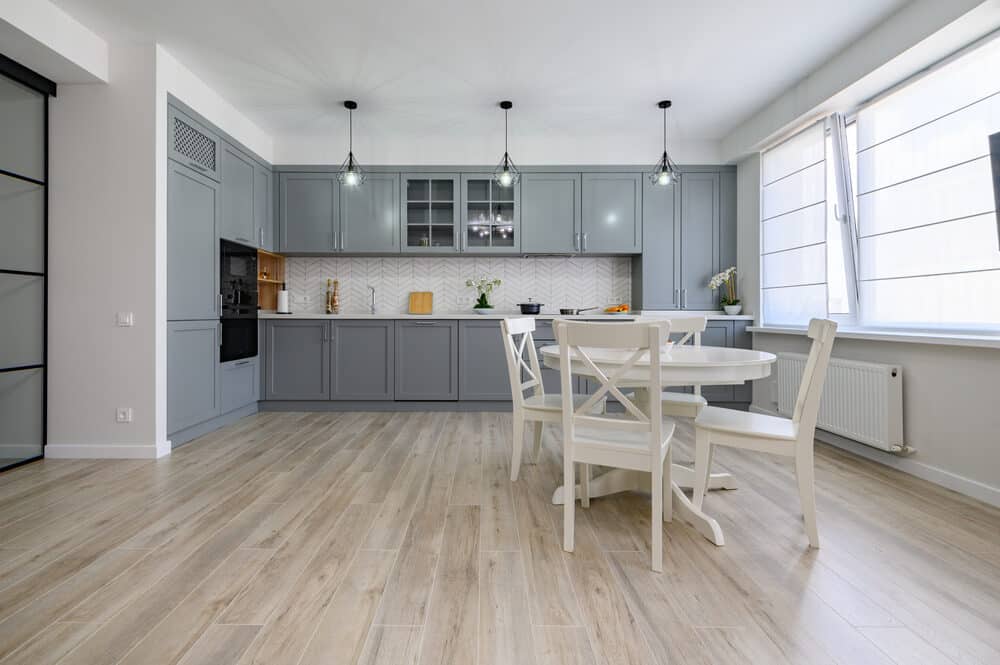
Choosing the Right Oak Finish
The finish you select for your oak flooring can significantly influence its appearance, durability, and maintenance requirements. Whether you prefer a natural, earthy look or desire a more customized finish, understanding your options is crucial. Here’s a guide to help you choose the right oak finish for your home:
-
Natural vs. stained oak:
- Natural Oak Finish: Natural oak flooring showcases the wood’s inherent beauty and character. It allows the natural grain patterns, knots, and color variations to shine through. If you appreciate the raw, authentic appeal of oak, this is the way to go. Natural finishes often feature a clear protective coat that enhances the wood’s natural colors.
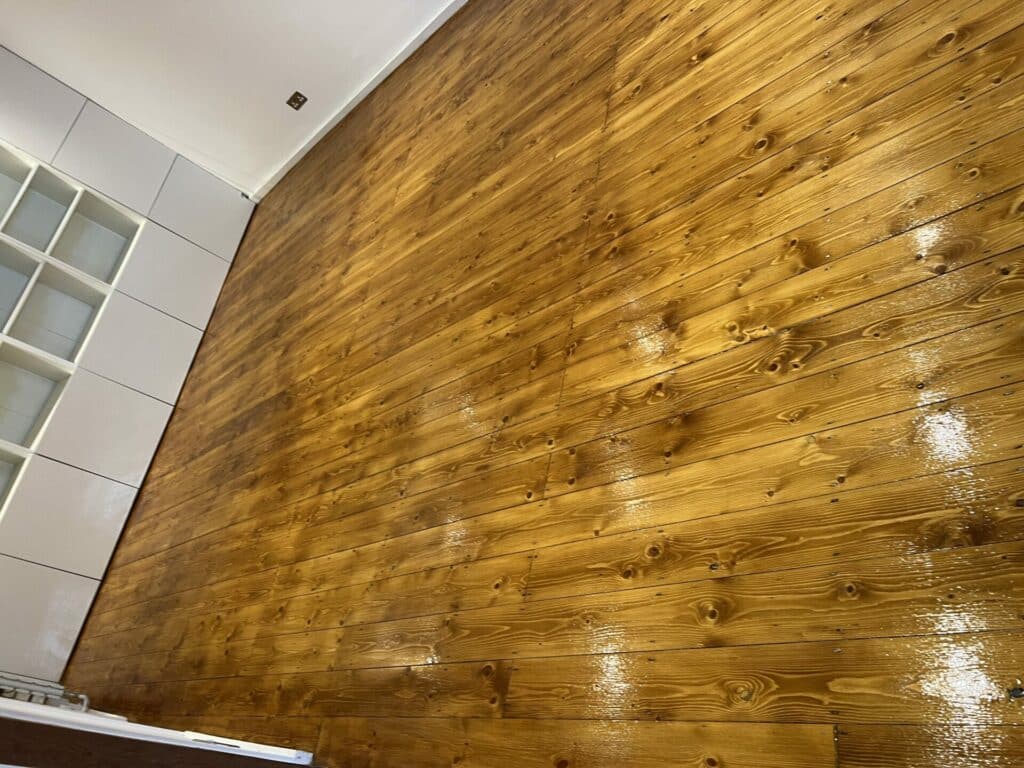
- Stained Oak Finish: Staining oak flooring allows you to customize its appearance. You can choose from a wide range of stain colors, from light and golden to dark and rich. Stains not only alter the color but also add depth and character to the wood. Staining is an excellent option if you want your oak floors to match specific interior design elements or create a certain ambiance.
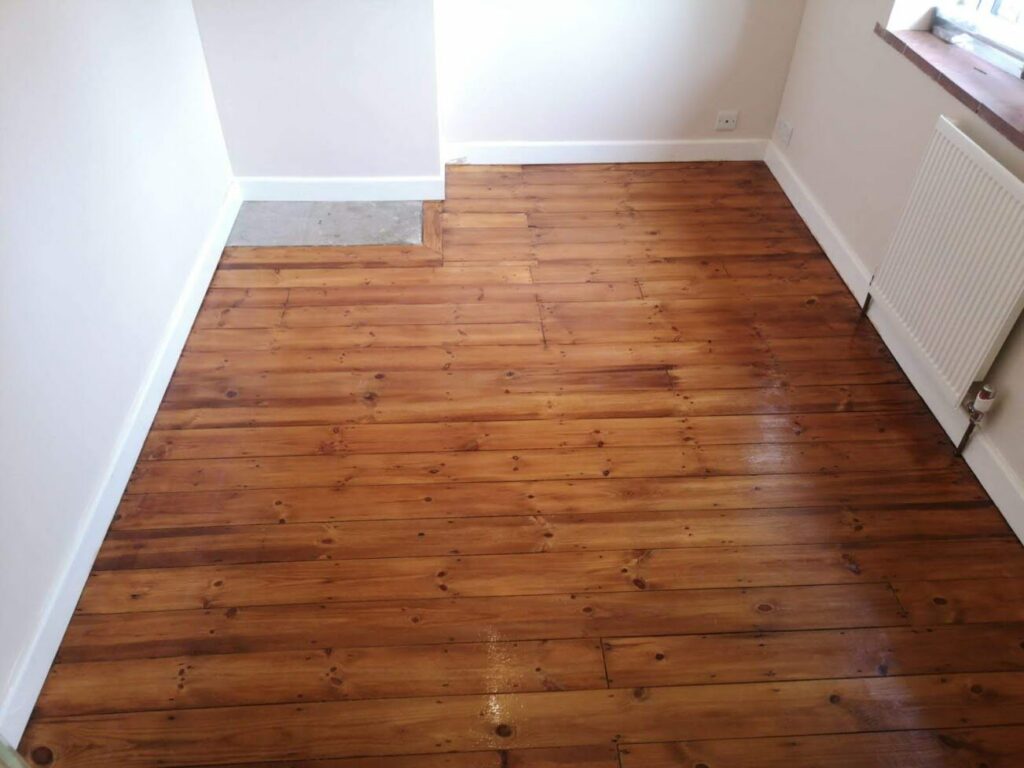
-
Matte, Semi-Gloss, or Glossy: Which Finish to Pick?
The sheen level of your oak flooring finish can dramatically impact the overall look of your space. Here’s a breakdown of the different options:
- Matte Finish: Matte finishes have a low sheen level and provide a natural, subtle appearance. They are less reflective and do an excellent job of concealing minor imperfections and scratches. Matte finishes create a warm and inviting ambiance.
- Semi-Gloss Finish: Semi-gloss finishes offer a moderate level of shine. They strike a balance between a natural matte look and a high-gloss finish. Semi-gloss finishes are relatively easy to clean and provide a slightly more formal appearance.
- Glossy Finish: High-gloss finishes offer the most shine and reflectivity. They create a polished and luxurious look but are more prone to showing scratches and imperfections. High-gloss finishes are ideal for formal and modern spaces where a sleek appearance is desired.
When choosing the sheen level, consider your lifestyle, the room’s purpose, and your personal aesthetic preferences. For high-traffic areas or homes with pets and children, matte or semi-gloss finishes are often more practical.

-
Surface Texture Options:
Beyond the color and sheen, you can also choose from various surface textures to enhance the character of your oak flooring.
- Smooth Finish: Smooth surfaces are sanded to perfection, providing a clean and sleek look. They are easy to clean but may show scratches more prominently.
- Wire-Brushed Finish: This technique creates a textured surface by removing the soft wood grain, leaving behind the harder grain. It adds depth and character to your flooring while disguising minor wear and tear.
- Hand-Scraped Finish: Hand-scraped finishes mimic the rustic, weathered appearance of antique wood floors. They provide a charming, aged look that’s perfect for traditional and rustic interiors.
- Distressed Finish: Distressed finishes feature intentional markings, dents, and wear patterns that give your floors a lived-in, vintage appearance. They are excellent for achieving a farmhouse or shabby chic look.
By carefully considering these options and assessing your design preferences, you can select the perfect oak finish that aligns with your vision for your space. The chosen finish will play a pivotal role in bringing out the desired style and ambiance of your home.
Stylish Oak Flooring Patterns
One of the exciting aspects of oak flooring is its versatility in creating unique and stylish patterns. The way you arrange the individual planks can transform your space and elevate its visual appeal. Let’s explore some of the most popular oak flooring patterns to help you achieve the desired look for your home:
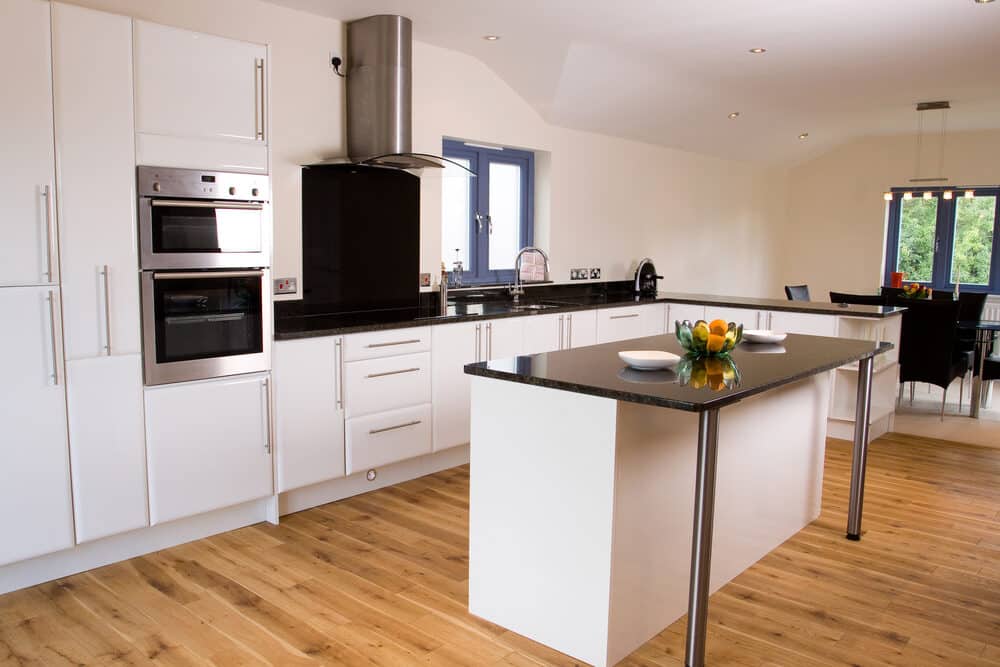
-
Herringbone Pattern:
The herringbone pattern is a classic and timeless choice that adds a touch of elegance to any room. It involves laying rectangular oak planks at a 90-degree angle to create a zigzag or “V” shape. The result is a stunning, intricate pattern that can be a focal point in your home.
- Suitable for: traditional, vintage, and even contemporary interiors. Herringbone works well in entryways, living rooms, dining rooms, and hallways.
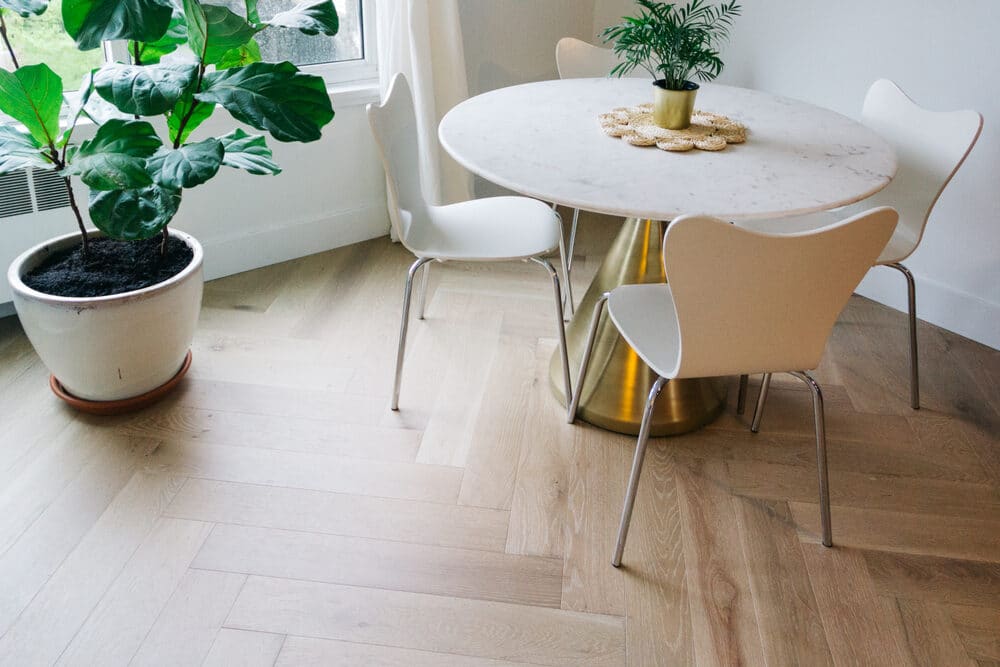
-
Chevron Pattern:
Similar to herringbone, the chevron pattern features planks that are cut at precise angles to form a continuous “V” shape. However, the difference lies in the angle of the cut, which is typically 45 degrees, creating a more continuous and linear look.
- Suitable for: modern and contemporary interiors. Chevron patterns can provide a sense of movement and sophistication to spaces like kitchens, bedrooms, and offices.
-
Basketweave Pattern:
The basketweave pattern is a traditional choice that resembles the interwoven appearance of a woven basket. It involves laying square oak tiles in pairs at right angles to create a repeating square-and-rectangle design.
- Suitable for: vintage, rustic, and classic interiors. This pattern adds a cozy and nostalgic touch to spaces like bathrooms, kitchens, and bedrooms.
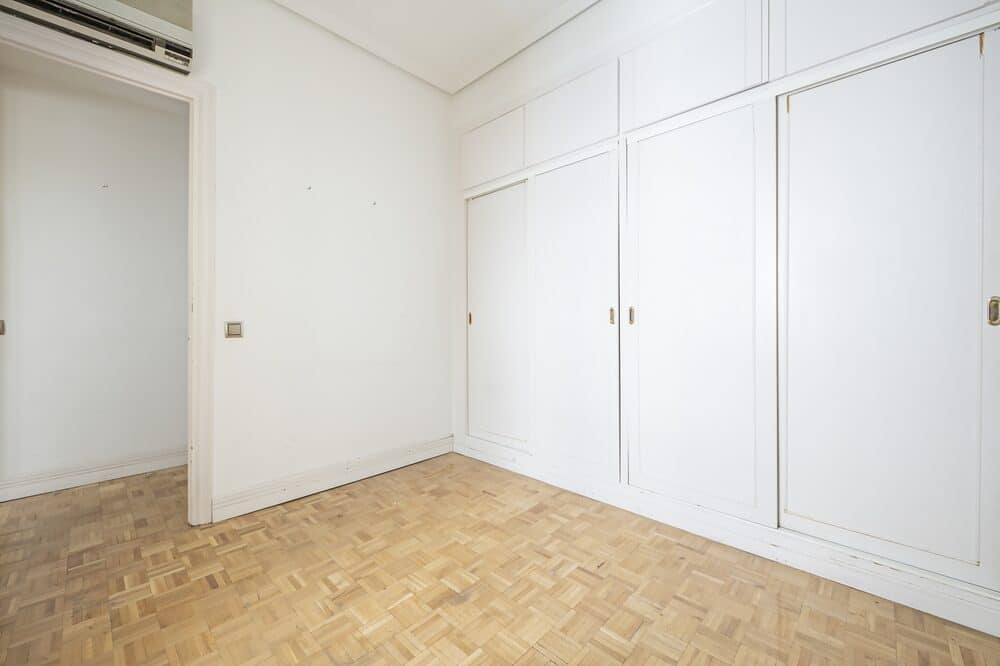
-
Parquet Pattern:
Parquet flooring consists of smaller wooden blocks or tiles arranged in various geometric shapes, such as squares, rectangles, or triangles. Oak parquet can create intricate and visually captivating patterns.
- Suitable for: versatile and can be adapted to various interior styles, from traditional to contemporary. Parquet patterns work well in living rooms, dining areas, and foyers.
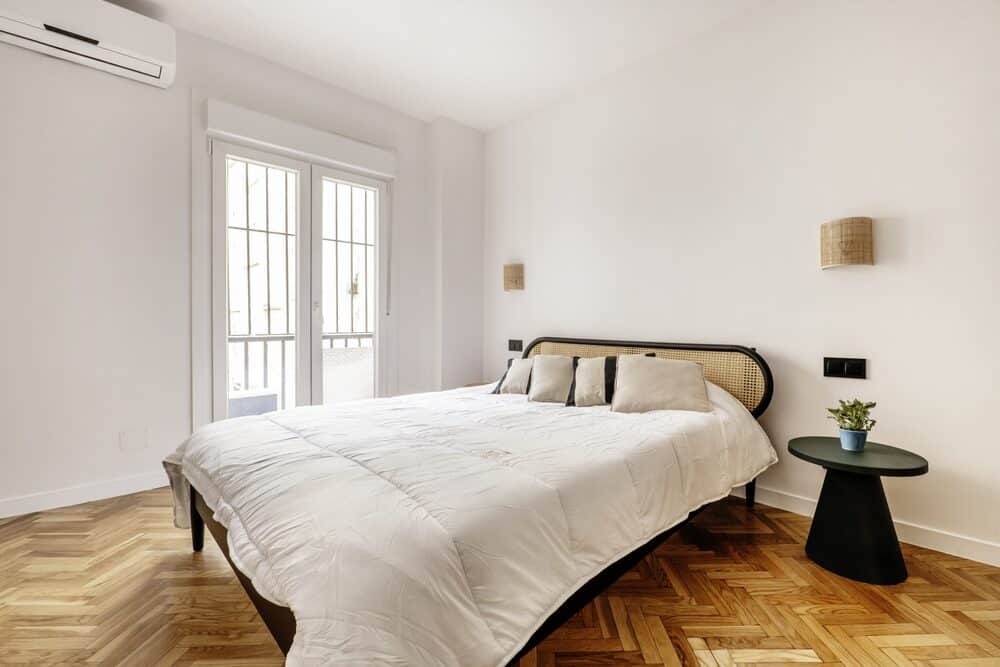
-
Wide Planks vs. Narrow Planks:
The width of the oak planks can also impact the overall aesthetic. Wide planks (often 5 inches or wider) can make a room feel more open and modern, while narrow planks (typically 2 to 4 inches wide) can create a more traditional and cozy atmosphere.
- Suitable for: Wide planks are suitable for open living spaces and modern designs, while narrow planks can enhance the character of smaller rooms or spaces with a vintage feel.
-
Mixing Wood Species for Unique Patterns:
For a truly distinctive look, consider mixing oak with other wood species in your flooring. Combining different wood species can create beautiful contrasts and patterns, allowing you to personalize your space further.
- Suitable for: creative and eclectic interior designs where you want to make a bold statement. Mixing wood species can be applied in various rooms, depending on your design goals.
When selecting a pattern, consider the architectural features, room size, and existing decor of your space. Each pattern can convey a different mood and style, so choose one that aligns with your overall design vision. Whether you opt for a classic herringbone or a modern chevron, your choice of oak flooring pattern can be a defining element in your home’s interior.
Oak flooring installation
Installing oak flooring can be a rewarding and transformative home improvement project. Whether you’re considering a DIY installation or hiring a professional, understanding the process and best practices is crucial for achieving a beautiful and long-lasting result. Let’s explore the steps involved in oak flooring installation:
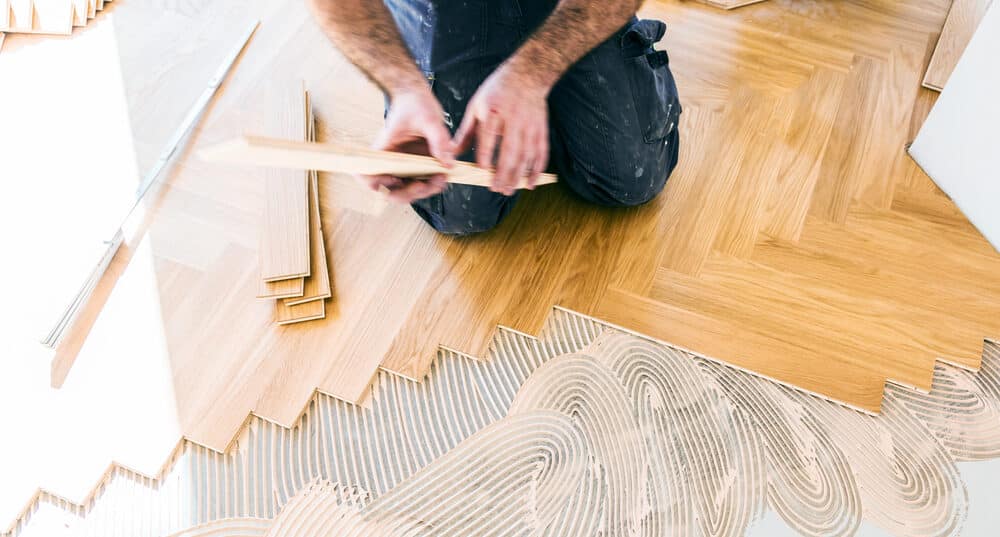
-
Preparation:
Before you begin the installation process, there are several essential preparatory steps:
- Acclimation: Allow your oak flooring to acclimate to the room’s temperature and humidity for at least 48 hours. This helps prevent later expansion or contraction of the wood.
- Subfloor Inspection: Ensure that your subfloor is clean, dry, level, and structurally sound. Any imperfections or irregularities must be addressed before laying the oak planks.
- Moisture Barrier: In areas where moisture is a concern, such as basements or bathrooms, consider installing a moisture barrier or underlayment to protect your oak flooring.
-
Layout and Planning:
Careful planning is crucial to achieving the desired look and pattern for your oak flooring.
- Layout Design: Decide on the layout pattern you want to use, whether it’s a classic herringbone, chevron, or a standard straight pattern. Measure the room and calculate the number of planks needed.
- Starting Point: Determine where you will start the installation. Usually, it’s best to begin along a straight wall or in the center of the room, depending on your chosen pattern.
- Expansion Gaps: Leave expansion gaps around the perimeter of the room to accommodate natural wood expansion and contraction. The recommended gap size is typically 1/2 inch.
-
Installation:
Now it’s time to install your oak flooring planks.
- Tongue-and-Groove: Oak planks often feature a tongue-and-groove system. Fit the tongue of one plank into the groove of the adjacent plank, ensuring a snug fit.
- Fastening: Depending on your chosen installation method, you can either nail or glue the oak planks to the subfloor. Follow the manufacturer’s recommendations and guidelines for the specific type of oak flooring you have.
- Pattern Alignment: Maintain the chosen pattern alignment throughout the installation. Pay close attention to angles and corners, ensuring a precise fit for patterns like herringbone or chevron.
- Trimming and Cutting: You’ll likely need to cut planks to fit at the edges of the room or around obstacles like doorways. Use a miter saw or circular saw for precise cuts.
-
Finishing Touches:
Once the oak flooring is installed, there are some final steps to complete the project:
- Trim Installation: Install baseboards, quarter-round, or other appropriate trim to cover the expansion gaps and provide a finished look.
- Staining and Finishing: If you’ve chosen natural oak or unfinished planks, you may need to stain and finish the flooring to achieve the desired color and sheen. Follow the manufacturer’s recommendations for finishing products and techniques.
- Cleaning and Maintenance: After installation and finishing, thoroughly clean your oak flooring to remove any dust or debris. Begin a regular maintenance routine to keep your floors looking their best.
-
Professional Installation vs. DIY:
Deciding whether to hire a professional installer or embark on a DIY project depends on your skill level, available time, and the complexity of your chosen pattern. While DIY can be cost-effective, intricate patterns like herringbone may benefit from professional expertise to ensure precision and durability.
Oak flooring installation is a rewarding process that can enhance the beauty and value of your home. By following these steps and considering your skill level and preferences, you can achieve stunning oak floors that elevate the ambiance of your living spaces.
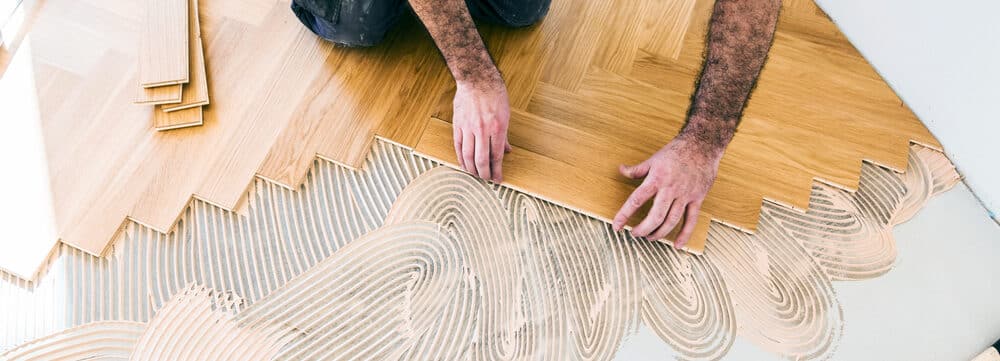
Maintaining Your Oak Floors
Once you’ve installed beautiful oak flooring in your home, proper Oak Floor maintenance is key to preserving its natural beauty and ensuring its longevity. With regular care and attention, your oak floors can remain an elegant and durable part of your home for many years. Here are some essential maintenance tips to help you keep your oak floors in pristine condition:
-
Daily Cleaning and Care:
Establishing a daily cleaning routine will help prevent dirt and debris from accumulating on your oak floors.
- Sweep or Vacuum: Use a soft-bristle broom or a vacuum cleaner with a floor attachment to remove dust, dirt, and loose particles. Be sure to choose a vacuum that is safe for hardwood floors to avoid scratching.
- Dust Mop: Consider using a microfiber dust mop to pick up fine particles and pet hair without scratching the surface.
- Avoid Excess Moisture: Oak flooring is susceptible to moisture damage. Wipe up spills immediately using a soft, dry cloth to prevent water from seeping into the wood.
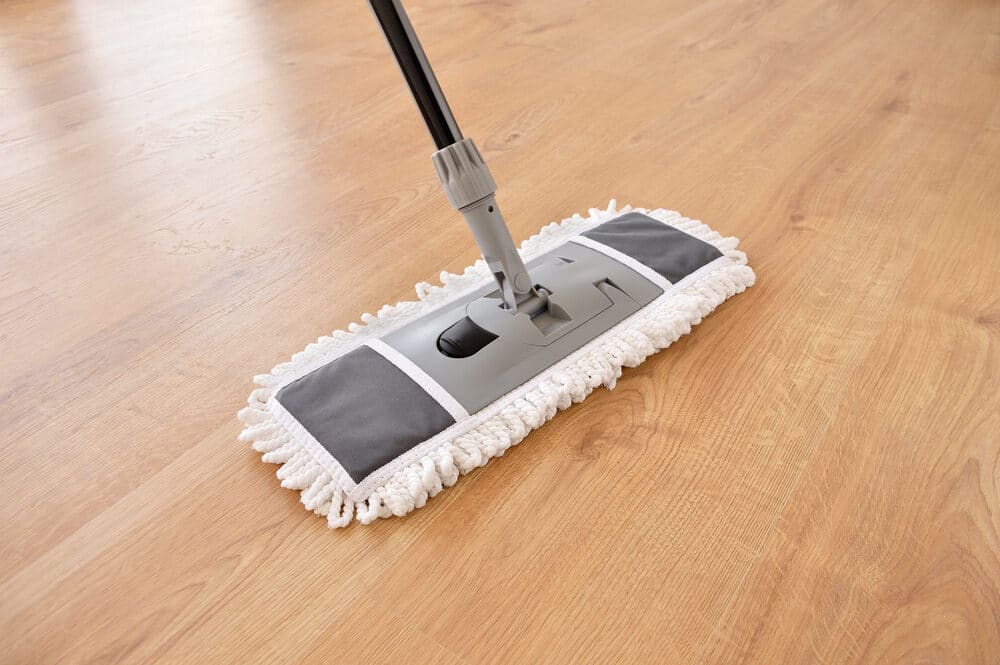
-
Preventing Scratches and Dents:
Taking preventive measures can help protect your oak floors from everyday wear and tear.
- Furniture Pads: Place felt or rubber furniture pads under the legs of chairs, tables, and other heavy furniture to prevent scratches and dents when moving them.
- Use Rugs and Mats: Place rugs or mats at entryways and high-traffic areas to trap dirt and prevent it from being tracked onto the oak flooring. Make sure these mats have a non-slip backing to avoid sliding.
- Trim Pet Nails: Keep your pets’ nails trimmed to prevent scratches when they walk on the oak floors.
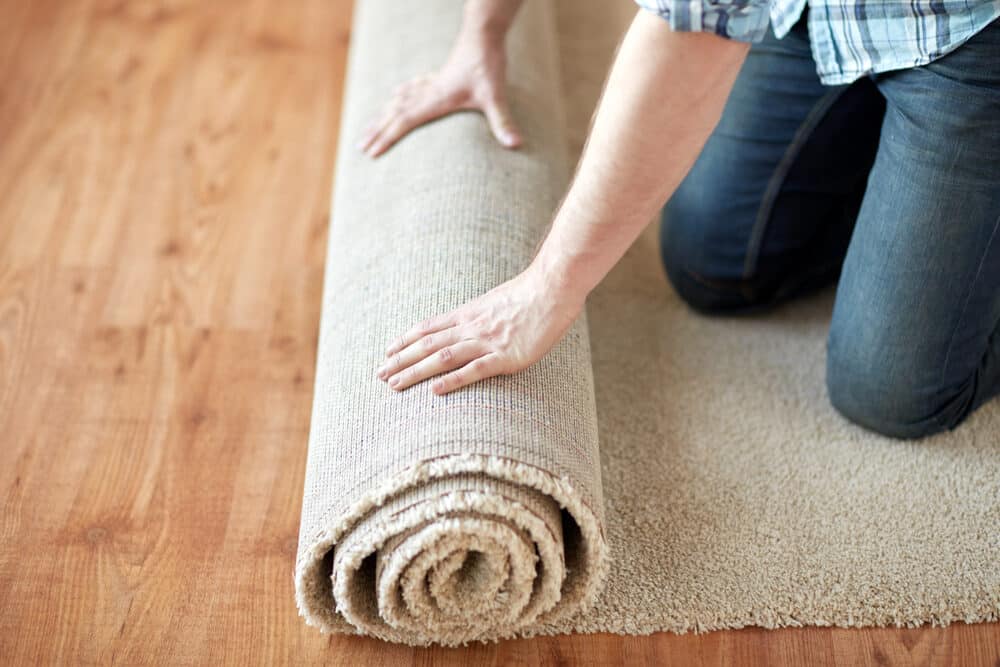
-
Periodic Maintenance and Refinishing:
Over time, your oak floors may show signs of wear. Periodic maintenance can help restore their appearance.
- Recoat or Refinish: Depending on the level of wear and the type of finish, you may need to recoat or refinish your oak floors. This process involves sanding the surface to remove the old finish and applying a new one. Recoating is a less invasive option, while refinishing provides a completely new look.
- Timing: The need for recoating or refinishing your oak floor varies depending on factors like foot traffic, pets, and the type of finish used. As a general guideline, consider recoating every 3–5 years and refinishing every 10–15 years, or as needed.
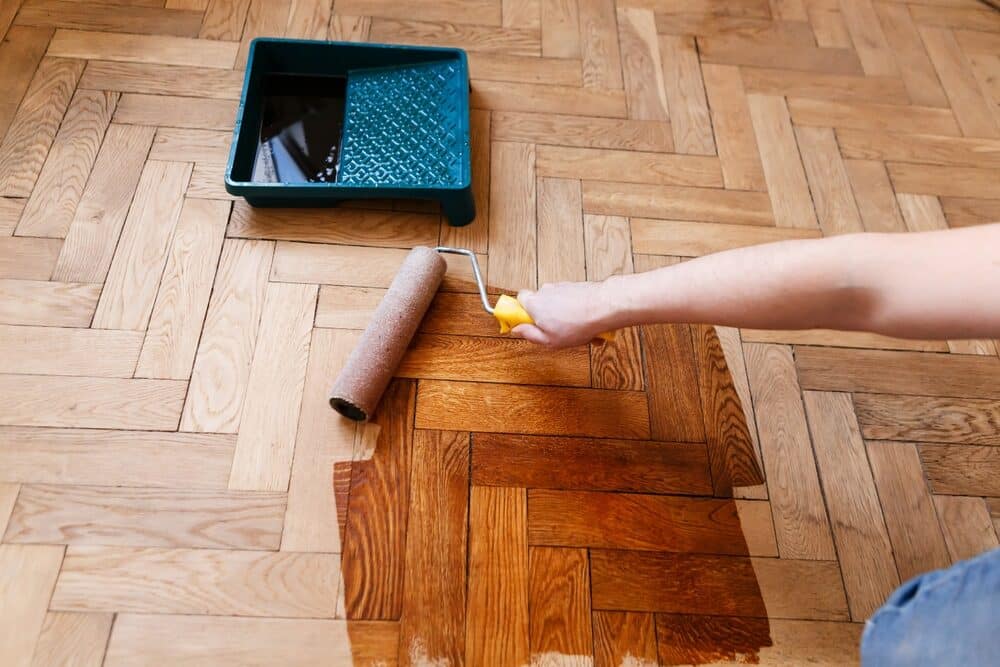
-
Specialized Cleaning:
Occasionally, your oak floors may require more thorough cleaning to maintain their luster.
- Use a Hardwood Floor Cleaner: When it’s time for a deeper clean, use a specialized hardwood floor cleaner recommended by the manufacturer. Avoid using excessive water, as it can damage the wood.
- Microfiber Mop: Apply the cleaner sparingly and use a microfiber mop to clean the floor. Avoid using abrasive scrubbing pads or harsh chemicals.
- Dry Completely: After cleaning, ensure the floor is completely dry to prevent water damage. You can use a dry mop or towel to remove any excess moisture.
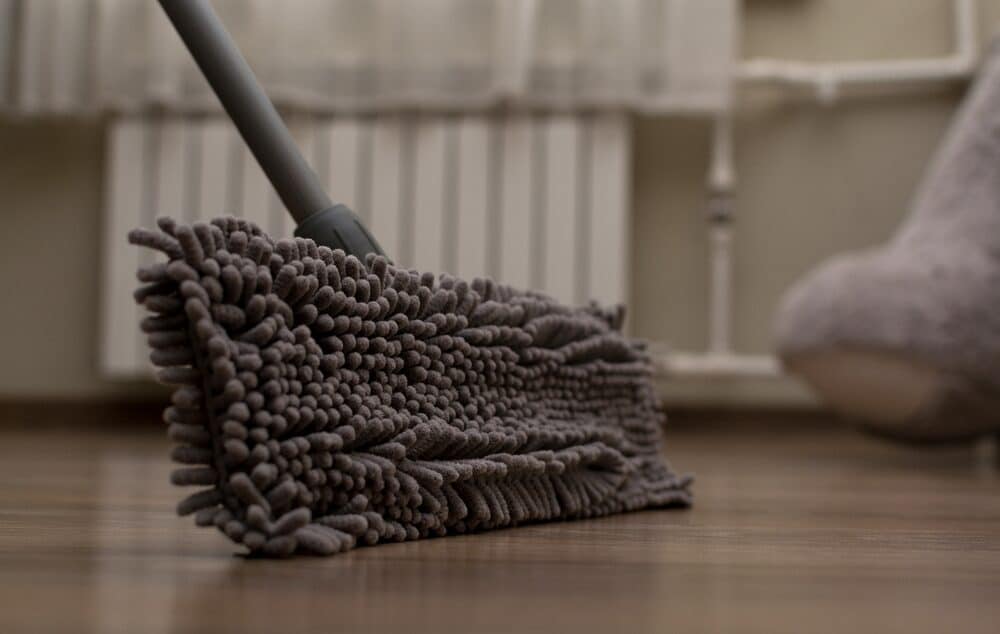
-
Protect from sunlight:
Prolonged exposure to direct sunlight can cause the fading and discoloration of oak floors. Take steps to protect your floors from excessive UV rays by using curtains, blinds, or UV-protective window films.
By following these oak floor maintenance guidelines and taking steps to prevent damage, you can enjoy the timeless elegance and durability of your oak floors for years to come. Remember that oak flooring ages gracefully, developing a beautiful patina over time, and with proper care, it can become a cherished feature of your home.
Oak Flooring in Different Rooms
Oak flooring is a versatile choice that can enhance the aesthetic appeal and functionality of various rooms in your home. Its durability, warmth, and timeless charm make it a suitable option for a wide range of spaces. Let’s explore how oak flooring can be effectively used in different rooms:
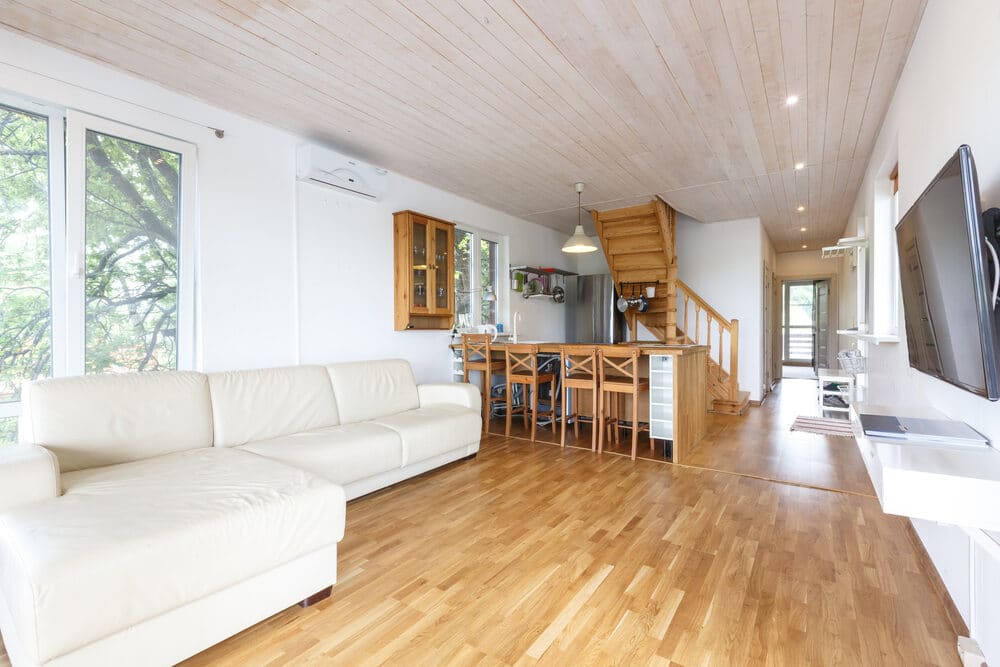
-
Living Rooms and Bedrooms:
Oak flooring adds a touch of elegance and comfort to your living areas and bedrooms.
- Warm and Cozy: Oak’s natural warmth and inviting appearance create a cozy atmosphere that’s perfect for relaxation and comfort in living rooms and bedrooms.
- Durable: These high-traffic areas benefit from oak’s durability, as it can withstand the wear and tear of daily use and foot traffic.
- Styling: Oak complements various interior styles, from traditional to modern, allowing you to easily match it with your furnishings and decor.
- Rugs: You can use area rugs to add a layer of texture and color to these rooms, further enhancing the visual appeal of your oak flooring.
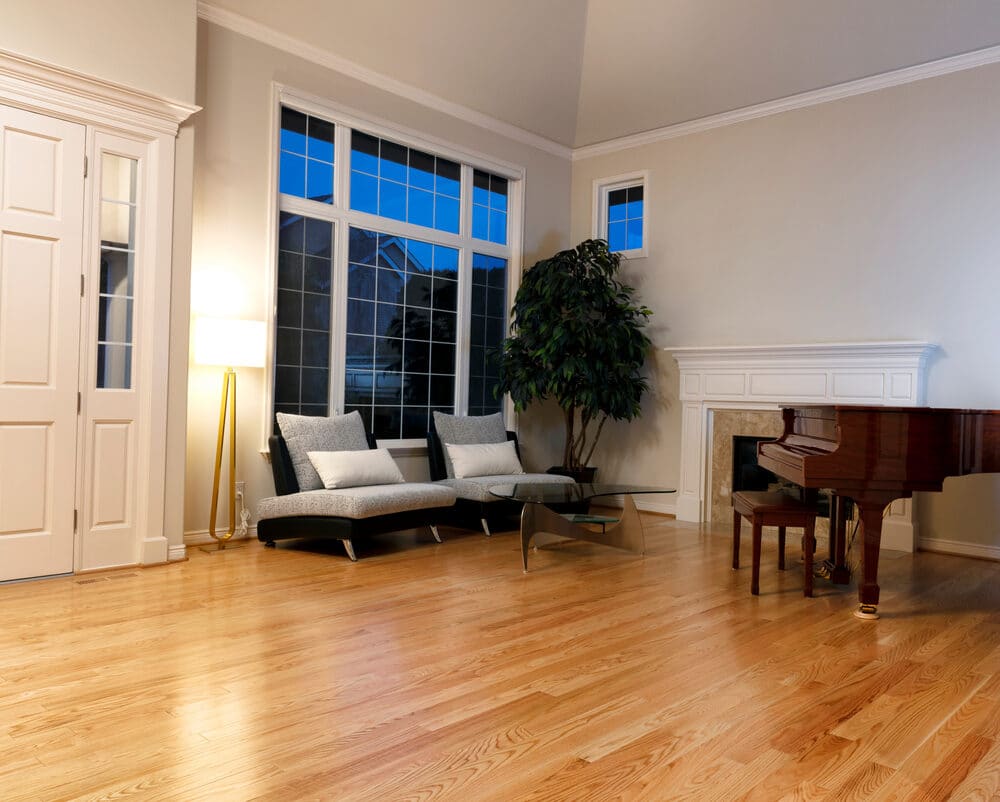
-
Kitchens and Dining Areas:
Kitchens and dining areas are well-suited for oak flooring, with some considerations:
- Stain Resistance: Choose a finish that provides stain resistance, as these areas are prone to spills and food-related accidents.
- Area Rugs or Mats: Place rugs or mats under dining tables and near kitchen sinks to protect the floor from spills and heavy use.
- Easy Cleanup: Oak’s smooth surface makes it easy to clean and maintain in these areas.
- Aesthetic Continuity: Oak flooring can create a sense of flow and continuity between your kitchen and adjacent living spaces if you have an open floor plan.
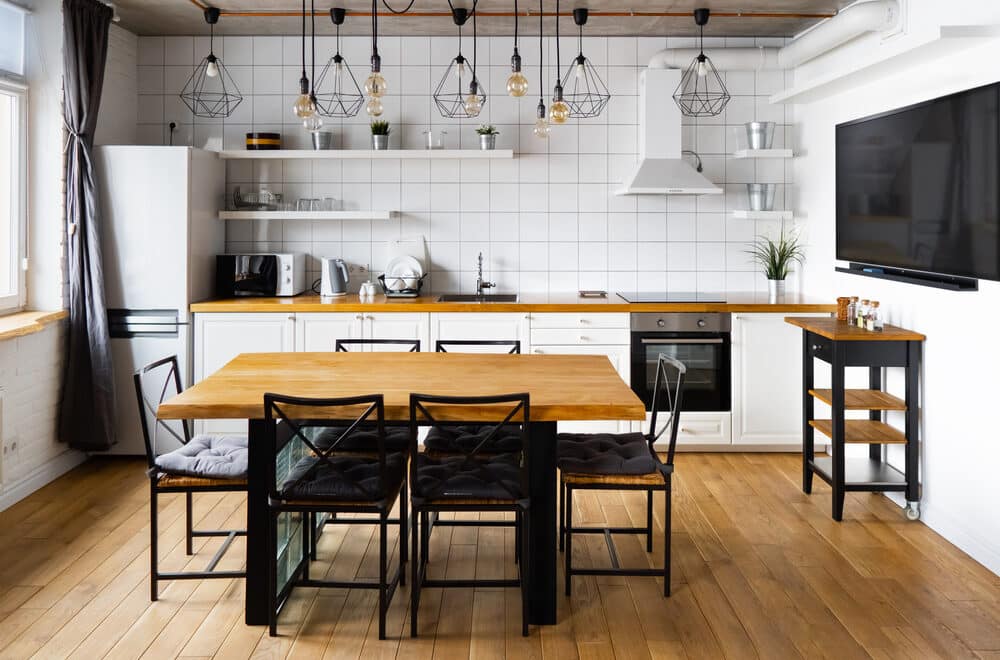
-
Bathrooms and Basements:
While oak flooring can be used in bathrooms and basements, there are important considerations:
- Moisture Protection: Install moisture barriers or waterproof underlayment to protect your oak flooring from moisture in bathrooms and basements.
- Engineered Oak: Consider using engineered oak in these areas, as it is more stable and less susceptible to moisture-related issues than solid oak.
- Maintenance: Ensure proper ventilation and humidity control to prevent moisture-related problems.
-
Entryways and Hallways:
Entryways and hallways are high-traffic areas that benefit from oak flooring’s durability and timeless appeal.
- Resilience: Oak flooring can handle heavy foot traffic and is less likely to show wear and tear in these areas.
- Styling: The natural beauty of oak creates an impressive first impression when guests enter your home.
- Maintenance: Regular cleaning is essential to remove dirt and debris tracked in from the outdoors.
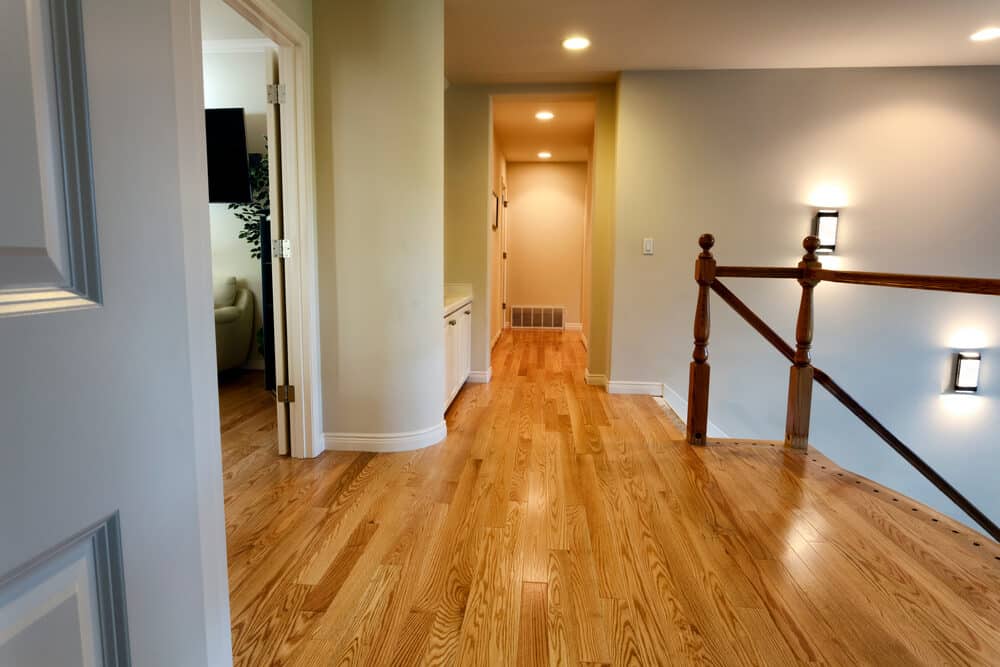
-
Home Offices and Libraries:
Oak flooring can add a touch of sophistication to your home office or library.
- Professional Aesthetic: The elegant and refined appearance of oak lends a professional and studious atmosphere to these spaces.
- Comfort: Oak’s warmth and comfort underfoot can make working or reading for extended periods more enjoyable.
- Area Rugs: Consider using area rugs or office chair mats to protect your oak flooring from chair wheels and heavy furniture in home offices.
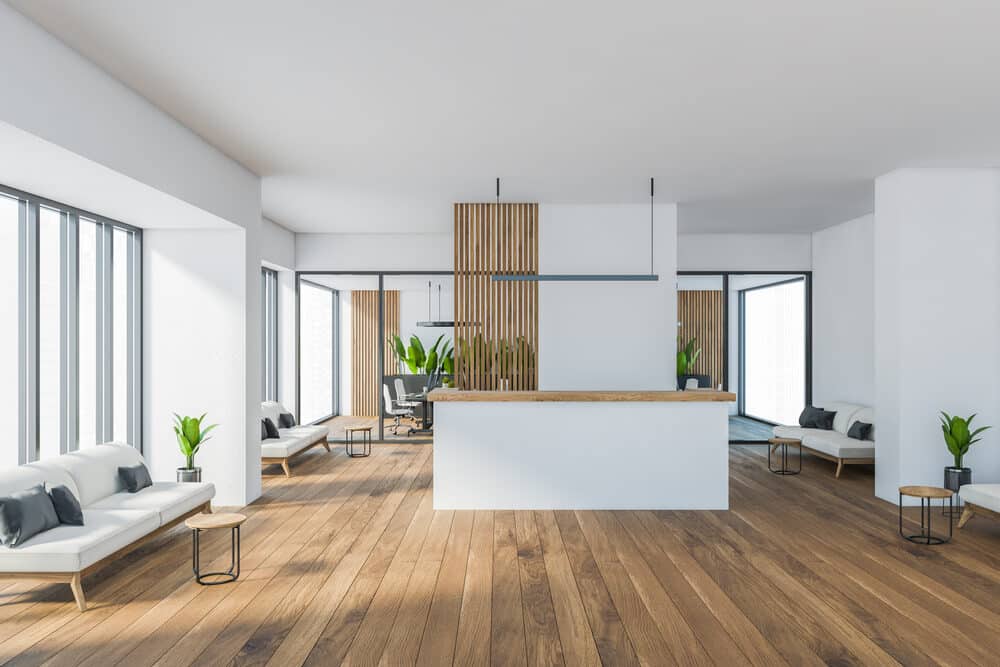
By carefully selecting the type of oak flooring, finish, and maintenance approach for each room, you can maximize the benefits of oak while ensuring its longevity and suitability for specific environments. Oak flooring not only adds value to your home but also elevates the aesthetics and functionality of each room, making it a worthwhile investment.
Oak Flooring and Interior Styles
The choice of oak flooring can significantly impact the overall style and ambiance of your interior spaces. Oak’s versatility and timeless appeal make it a suitable option for various interior design styles, allowing you to achieve the look and atmosphere you desire. Let’s explore how oak flooring can complement different interior styles:
-
Traditional Elegance:
Oak flooring is a classic choice that beautifully complements traditional interior styles.
- Richness: The warm tones and natural grain patterns of oak add a sense of richness and authenticity to traditional spaces.
- Formality: Oak’s polished appearance can enhance the formal and sophisticated look of traditional design.
- Classic Patterns: Classic patterns like herringbone and basketweave can further emphasize the traditional charm of oak flooring.
-
Modern Minimalism:
In modern minimalist interiors, oak flooring can provide a clean and uncluttered backdrop.
- Simplicity: Oak’s simplicity and clean lines align with the minimalist aesthetic, creating a sense of calm and openness.
- Light Tones: Lighter oak finishes can brighten up minimalist spaces, creating an airy feel.
- Wide Planks: Wide oak planks can add a contemporary touch to the overall look.
-
Rustic Charm:
For rustic interior styles, oak flooring brings a sense of warmth and authenticity.
- Warmth: Oak’s warm and earthy tones complement rustic decor, creating a cozy and inviting atmosphere.
- Texture: Consider textured or distressed oak finishes to enhance the rustic appeal and mimic the look of aged wood.
- Natural Elements: Pair oak flooring with other natural materials like stone, exposed wood beams, and rustic furnishings for a cohesive rustic look.
-
Coastal and Beachy Vibes:
In coastal and beach-themed interiors, oak flooring can mimic the sandy shores and ocean hues:
- Light and Airy: Light oak finishes evoke a coastal feel by reflecting the colors of the beach and the sea.
- Wide Planks: Wide oak planks provide a sense of spaciousness, reminiscent of a beach house.
- Nautical Accents: Incorporate nautical decor elements such as seashells, driftwood, and blue and white hues to complete the coastal look.
-
Eclectic and Bohemian:
Oak flooring can serve as a versatile canvas for eclectic and bohemian interiors.
- Mix and Match: Oak’s neutral palette allows for mixing and matching diverse furnishings and decor elements characteristic of eclectic and bohemian styles.
- Pattern Play: Experiment with unique oak flooring patterns like parquet to add an eclectic twist.
- Color Pop: Oak’s neutrality can serve as a backdrop for vibrant and colorful decor and textiles often found in bohemian interiors.
-
Industrial Chic:
In industrial-style interiors, oak flooring can balance the ruggedness with a touch of warmth.
- Contrast: Oak’s natural warmth can soften the industrial aesthetics characterized by exposed brick, concrete, and metal.
- Rich Tones: Darker oak finishes can create a striking contrast against industrial elements.
- Vintage Touch: Consider reclaimed or distressed oak for a more authentic industrial look.
By choosing the right oak finish, pattern, and complementary decor elements, you can seamlessly integrate oak flooring into your chosen interior style. Whether you’re aiming for traditional elegance, modern minimalism, or something in between, oak’s adaptability makes it a versatile and enduring choice for any design vision.
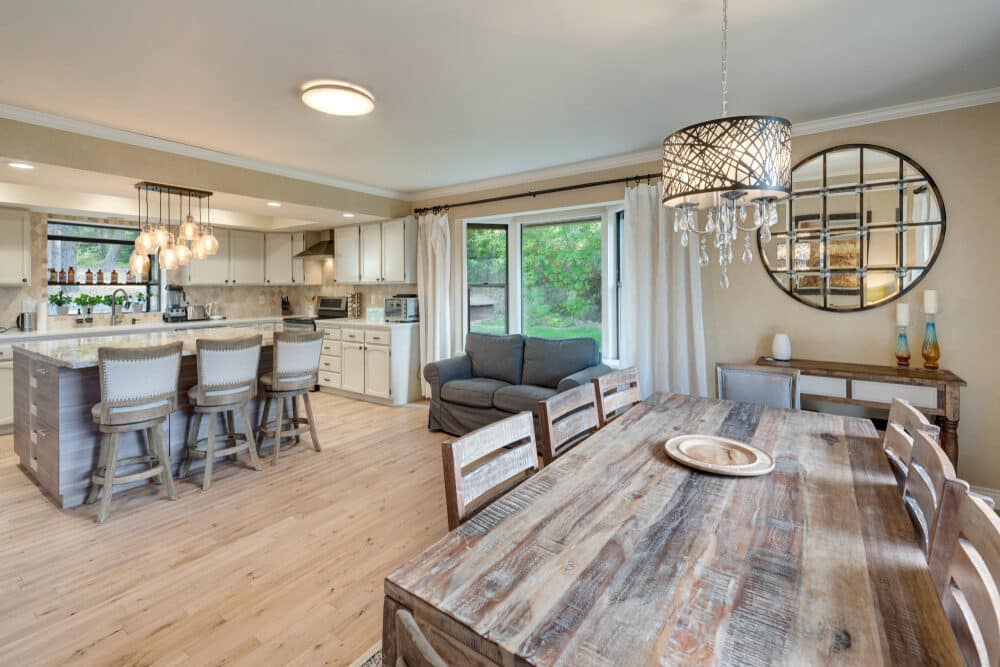
Conclusion
In the world of flooring choices, oak stands out as a timeless and versatile option that can transform your home’s interior into a space of elegance, warmth, and durability. Whether you’re drawn to the classic charm of traditional designs, the sleek lines of modern minimalism, or the rustic allure of a farmhouse retreat, oak flooring can be tailored to suit your unique style and needs.
Throughout this guide, we’ve explored the allure of oak flooring and how it complements different interior styles. We’ve delved into the various types of oak flooring, from solid to engineered, and discussed the importance of choosing the right finish, pattern, and installation method to bring your vision to life. We’ve also highlighted the significance of oak floor maintenance, room suitability, sustainability, and budgeting in your oak flooring journey.
Oak flooring isn’t just about aesthetics; it’s an investment in your home’s beauty and functionality that can last for generations. Whether you’re installing oak flooring in your living room, bedroom, kitchen, or any other space, the right choice of oak can add value, character, and comfort to your home.
So, as you embark on your oak flooring project, consider your lifestyle, design preferences, and environmental values. Take the time to explore the diverse options available and create a budget that aligns with your goals. With the right knowledge and careful planning, your oak flooring venture will not only enhance your living spaces but also stand as a testament to your commitment to quality and craftsmanship.

Sanding
We provide virtually dust-free sanding with our continuous belt machinery with mobile extraction units, giving you a safer environment for your family.
Oiling
This organic finish not only adds beauty to your home but also has exceptional water-repellent characteristics, making it easier to clean and maintain.
Waxing
This natural floor finish offers the softest and most mellow appearance – and leaves your floor able to breath.
Buffing
Using soft buffing machines (and hand-polishing where required) will bring a wonderful sheen to your newly-finished floor.
Repairs
We offer a full assessment of your wooden floors to determine what repairs are needed to provide the perfect working surface for the later stages of sanding, staining and sealing.
Restoration
We offer a comprehensive restoration process designed to address floors that are improperly fitted or damaged over time through wear and tear.
Request a fixed price quote for your wood floor restoration now
Simply enter your postcode below to get started.
Services
Wood Floor Sanding Wood Floor Restoration Wood Floor Scratch Repair Squeaky Wood Floor Repair Parquet Floor Sanding Parquet Floor Restoration Commercial Floor Sanding Church Floor Sanding Community Centre Floor Sanding School Floor Sanding Gap Filling Gap Filling with ResinCopyright © Mr Sander®
Privacy & Cookies Terms & Conditions Complaints Procedure Cancellation Rights Sitemap
